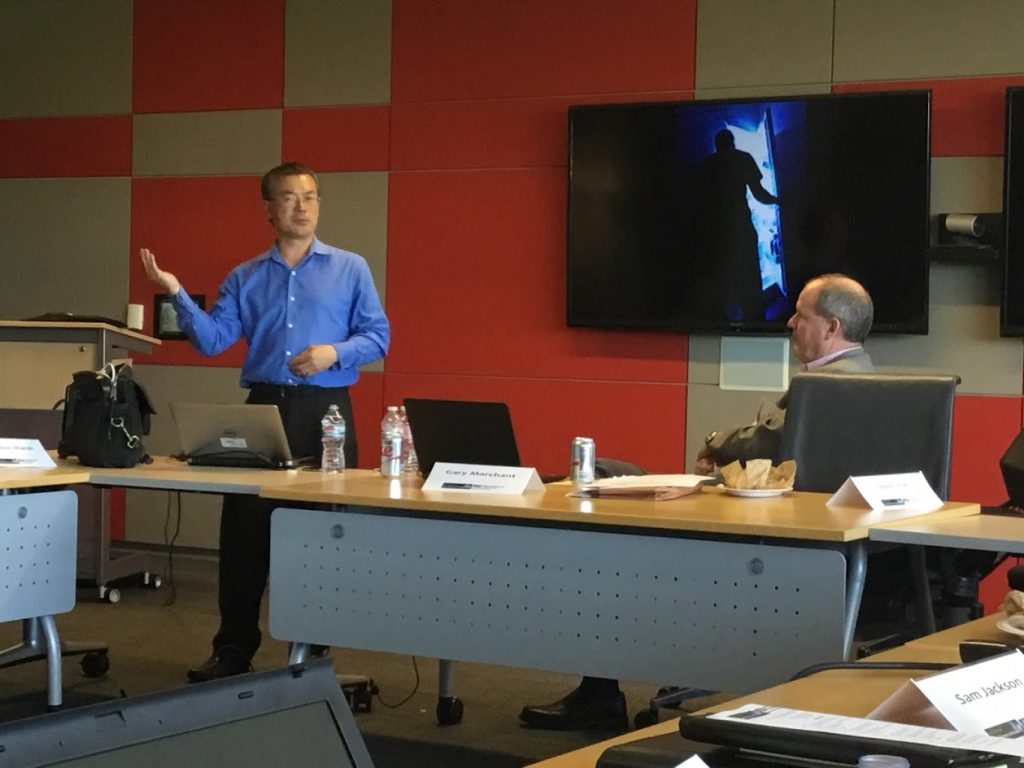The Center for Law, Science & Innovation convened its Second Annual Workshop on Healthspan Extension Policy and Regulation in Scottsdale Arizona on May 5, 2017. This invitation-only event was attended by approximately 30 experts in science, medicine, public policy, regulation, law and ethics. The purpose of this annual workshop series is to address the regulatory, legal, policy and ethical issues in bringing to the market interventions that can extend human lifespan and healthspan. David Ewing Duncan, author of books such as The Experimental Man and When I’m 164, kicked off the workshop with a discussion of big data in healthcare, and how artificial intelligence will be needed and will likely soon be available to utilize this data to inform us of environmental, dietary, lifestyle, and medical interventions that can extend the quality and quantity of human life.
Jan Vijg, a research scientist at the Albert Einstein College of Medicine, next presented the results of his recently published Nature study suggesting an upper limit of 115-120 years to the human lifespan, and presented data on the accumulation of genetic and epigenetic changes with aging, the cumulative effect of which likely limits the human lifespan. Gordon J. Lithgow, Research Director at The Buck Institute for Research on Aging, presented next on “The Pharmacology of Lifespan Extension,” in which he demonstrated that we can increase lifespan and healthspan in lab animals with drug like molecules, that there are hundreds of drug targets that have been identified and are available, but more work needs to be done to understand and ensure reproducibility of results and what factors may affect study outcomes.
Participants were then treated to a fascinating lunch time talk by Joon Yun, Palo Alto Investors, LLC, entitled “Longevity is Healthcare 3.0.” In a broad ranging talk, Dr. Yun argued that extending longevity and healthspan will become a central focus of our health care system going forward, and the key to achieving this goal will be in building and maintaining something he defined as “homeostatic capacity.”
The afternoon featured four presentations. First, Lewis Gruber, CEO of SIWA Corporation, provided an update on removing senescent cells as an anti-aging strategy, including presenting results of an anti-senescent cell monocolonal antibody his company is developing. Next, Tammy Phinney of Biogen presented on “Healthspan Extending Interventions: Perspectives From a Pharma Company,” identifying key challenges in the regulatory approval and commercialization of a drug product that extends human lifespan. Susan Brienza, a partner in the law firm of Ryley Carlock & Applewhite, reviewed the significant number of potential anti-aging nutraceuticals that are available, and how such products are regulated by the FDA and FTC. Finally, Gary Marchant, Faculty Director of the Center for Law, Science & Innovation, discussed seven different possible regulatory and commercialization pathways for healthspan and lifespan extension interventions.
Each of the presentations was followed by a robust roundtable discussion involving all the workshop participants. While some progress was made in exploring the regulatory and commercialization pathways for healthspan extension interventions, which will be summarized in a published journal article that a number of the participants committed to co-author, many issues are still outstanding and will be taken up by next year’s workshop. At the end of the meeting, the workshop participants reconvened for some life-enhancing food and spirits at the nearby Pig & Pickle restaurant – yummy!






















